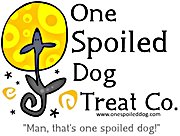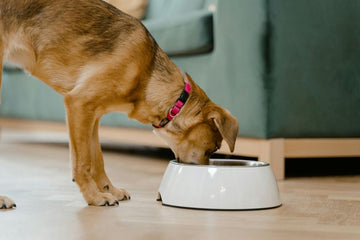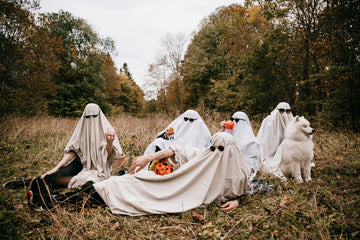Training your dog is a rewarding experience, but ensuring it’s both effective and healthy requires careful attention to treat portions. While treats are an excellent motivator, overindulging can lead to unwanted weight gain, digestive issues, or even reduced enthusiasm for training. Portion control is essential for maintaining your dog’s health while keeping them engaged in the learning process.
In this article, we’ll explore why portion control matters during training, how to manage treat portions effectively, and practical tips for striking the right balance between rewards and nutrition.
Why Portion Control Matters in Training
Treats are a core component of positive reinforcement training, helping dogs associate good behavior with rewards. However, without mindful portion control, even healthy treats can add up quickly, leading to:
-
Weight Gain:
Overfeeding can result in excessive calorie intake, especially in less active dogs. Extra weight increases the risk of health issues such as joint problems, heart disease, and diabetes, all of which can impact your dog’s quality of life. -
Digestive Issues:
Too many treats, especially rich or calorie-dense ones, can cause upset stomachs or even more serious conditions like pancreatitis. -
Reduced Training Effectiveness:
Over-reliance on treats can diminish their impact. If treats become too frequent or excessive, your dog may lose interest in working for them.
Key Factors to Consider for Treat Portions
To establish proper portion control, consider the following:
1. Dog’s Size and Weight
Smaller dogs require fewer calories than larger dogs, so their treat portions should reflect their size. For instance, a small breed like a Chihuahua will need much smaller portions compared to a Labrador Retriever.
2. Type of Treat
Treats vary widely in calorie content. For example:
- Soft, chewy treats may contain more calories than crunchy biscuits.
- Freeze-dried or single-ingredient treats (like chicken or liver) are typically more nutrient-dense.
Check the calorie count on packaging or opt for homemade options where you control the ingredients.
3. Activity Level
Highly active dogs or those engaged in vigorous activities like agility training may require more calories, including additional treats. Conversely, less active dogs or senior pets should have treat portions minimized to maintain a healthy weight.
4. Daily Diet
Treats should never exceed 10% of your dog’s daily caloric intake. If your dog already eats a nutritionally balanced diet, treats must be factored into their overall calorie allowance to avoid overfeeding.
How to Control Training Treat Portions
1. Pre-Measure Treats
Before training, measure out the appropriate amount of treats for your session. Use a small container or bag to ensure you don’t unintentionally overfeed.
Example: If your dog’s daily caloric limit allows for 50 calories of treats, measure those out ahead of time and stick to that amount during training.
2. Break Treats into Smaller Pieces
For training, dogs don’t need large treats—small, bite-sized pieces are sufficient to reward behavior. Breaking larger treats into smaller portions allows for frequent rewards without excessive calorie intake.
For instance, a single dog biscuit can be broken into four or five smaller pieces. This also keeps your dog engaged, as they’ll receive more frequent rewards.
3. Choose Low-Calorie Options
Low-calorie treats are ideal for training because they allow for more frequent rewards without exceeding calorie limits. Look for options designed specifically for training or use natural alternatives like:
- Small pieces of carrots, cucumbers, or apples.
- Freeze-dried proteins, such as chicken or fish, which are nutrient-rich but low in calories.
4. Account for Treats in Your Dog’s Daily Diet
Adjust your dog’s meal portions to account for the treats given during training. For example, if treats make up 10% of your dog’s daily calories, reduce their regular food by the same amount to maintain balance.
This adjustment helps prevent overfeeding while still allowing your dog to enjoy training rewards.
5. Use Treats Strategically
Incorporate treats thoughtfully during training:
- Intermittent Reinforcement: After your dog reliably performs a behavior, start rewarding less frequently. For example, instead of giving a treat every time they sit, reward every second or third successful attempt.
- Pair Treats with Praise: Combine treats with verbal praise or affection to reduce dependency on food rewards over time.
Practical Tips for Managing Treat Portions
- Stick to a Routine: Set a consistent training schedule and pre-plan your treat portions to avoid over-rewarding.
- Use Non-Food Rewards: Mix in other motivators, like toys, playtime, or verbal praise, to complement treats and reduce calorie reliance.
- Monitor Weight: Regularly check your dog’s weight and adjust treat portions as needed to maintain their ideal body condition.
- Track Progress: Keep a training log to track how many treats you give during sessions, helping you stay within limits.
Benefits of Portion Control in Training
Maintaining portion control benefits your dog’s:
- Health: Reduces the risk of obesity and related health issues.
- Focus: Keeps your dog engaged without becoming overly reliant on treats.
- Learning: Encourages consistency and reinforces behaviors effectively.
Conclusion
Portion control is a vital component of effective and healthy dog training. By carefully managing the size, frequency, and type of treats, you can motivate your dog while maintaining their overall health. Whether you’re using low-calorie snacks, breaking treats into smaller pieces, or adjusting their daily diet, mindful portion control ensures that treats remain a positive and beneficial part of training.
With thoughtful planning, you can keep your dog happy, healthy, and eager to learn, all while building a stronger bond through training.


